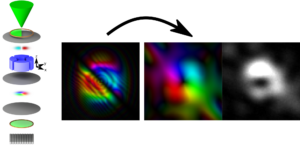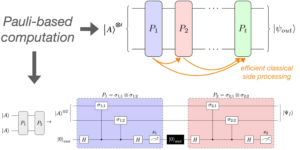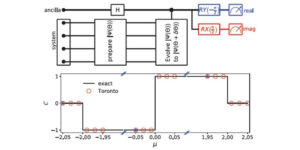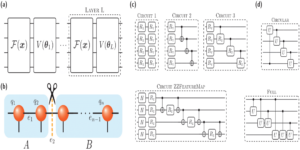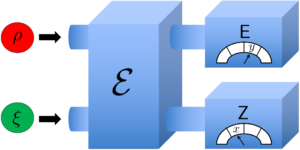1Центр квантової інформації та комунікації, École polytechnique de Bruxelles, CP 165/59, Université libre de Bruxelles, 1050 Brussels, Belgium
2Wyant College of Optical Sciences, The University of Arizona, 1630 E. University Blvd., Tucson, AZ 85721, США
3DAMTP, Центр математичних наук, Кембриджський університет, Кембридж CB3 0WA, Великобританія
4Факультет фізики, Технічний університет Данії, 2800 Kongens Lyngby, Данія
Вам цей документ цікавий чи ви хочете обговорити? Скайте або залиште коментар на SciRate.
абстрактний
We explore the role of majorization theory in quantum phase space. To this purpose, we restrict ourselves to quantum states with positive Wigner functions and show that the continuous version of majorization theory provides an elegant and very natural approach to exploring the information-theoretic properties of Wigner functions in phase space. After identifying all Gaussian pure states as equivalent in the precise sense of continuous majorization, which can be understood in light of Hudson's theorem, we conjecture a fundamental majorization relation: any positive Wigner function is majorized by the Wigner function of a Gaussian pure state (especially, the bosonic vacuum state or ground state of the harmonic oscillator). As a consequence, any Schur-concave function of the Wigner function is lower bounded by the value it takes for the vacuum state. This implies in turn that the Wigner entropy is lower bounded by its value for the vacuum state, while the converse is notably not true. Our main result is then to prove this fundamental majorization relation for a relevant subset of Wigner-positive quantum states which are mixtures of the three lowest eigenstates of the harmonic oscillator. Beyond that, the conjecture is also supported by numerical evidence. We conclude by discussing some implications of this conjecture in the context of entropic uncertainty relations in phase space.
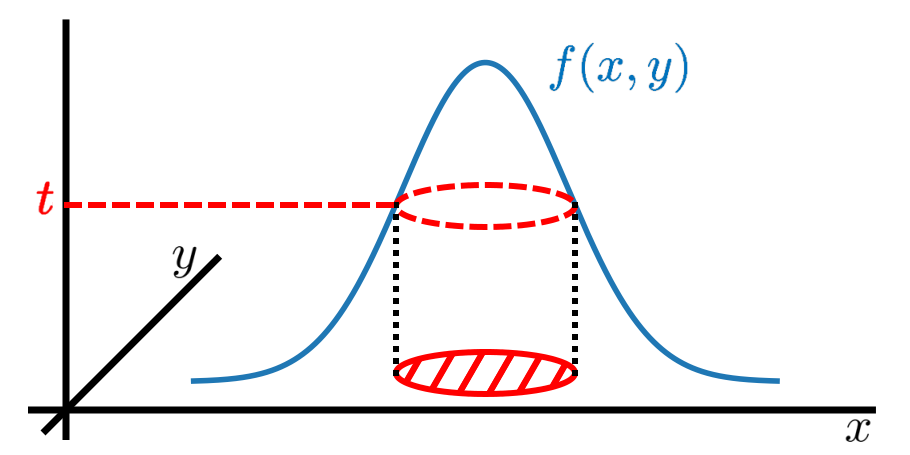
Популярне резюме
Ця математична теорія була розроблена більше століття тому і використовувалася в багатьох галузях науки, починаючи від статистики і закінчуючи фізикою. Примітно, що він був застосований до квантової фізики лише відносно недавно, де було показано, що це потужний підхід для дослідження квантової заплутаності. Як такий, він ніколи не використовувався для характеристики безперервних густин, які описують квантові змінні у фазовому просторі, тобто функції Вігнера. Ми показуємо, що постійна мажорізація є відповідним інструментом для цього. Основна мета нашої роботи стосується твердження, що функція Вігнера вакуумного стану бозонної моди (тобто основного стану гармонійного осцилятора) неперервно мажорує будь-яку іншу функцію Вігнера, роблячи її менш невизначеною в сенсі мажорування. .
Хоча ми розкриваємо та обговорюємо наші результати в контексті квантової оптики, вони переносяться на будь-яку канонічну пару і, отже, повинні мати наслідки в різних областях фізики.
► Дані BibTeX
► Список літератури
[1] G. H. Hardy, J. E. Littlewood, and G. Pólya, ``Inequalities,''. Cambridge University Press, 1934.
https: / / doi.org/ 10.2307 / 3605504
[2] A. W. Marshall, I. Olkin, and B. C. Arnold, ``Inequalities: Theory of Majorization and its Applications,'', vol. 143. Springer, second ed., 2011.
https://doi.org/10.1007/978-0-387-68276-1
[3] T. Ando, ``Majorization, doubly stochastic matrices, and comparison of eigenvalues,'' Linear Algebra Appl. 118, 163–248 (1989).
https://doi.org/10.1016/0024-3795(89)90580-6
[4] K. Mosler, ``Majorization in economic disparity measures,'' Linear Algebra and its Applications 199, 91–114 (1994).
https://doi.org/10.1016/0024-3795(94)90343-3
[5] T. van Erven and P. Harremoës, ``Rényi divergence and majorization,'' in 2010 IEEE International Symposium on Information Theory, pp. 1335–1339, IEEE. 2010.
https:///doi.org/10.1109/ISIT.2010.5513784
[6] M. A. Alhejji and G. Smith, ``A Tight Uniform Continuity Bound for Equivocation,'' in 2020 IEEE International Symposium on Information Theory (ISIT), pp. 2270–2274. 2020.
https:///doi.org/10.1109/ISIT44484.2020.9174350
[7] M. G. Jabbour and N. Datta, ``A Tight Uniform Continuity Bound for the Arimoto-Rényi Conditional Entropy and its Extension to Classical-Quantum States,'' IEEE Transactions on Information Theory 68, 2169–2181 (2022).
https:///doi.org/10.1109/TIT.2022.3142812
[8] A. Horn, ``Doubly Stochastic Matrices and the Diagonal of a Rotation Matrix,'' American Journal of Mathematics 76, 620–630 (1954).
https: / / doi.org/ 10.2307 / 2372705
[9] M. A. Nielsen, ``Conditions for a Class of Entanglement Transformations,'' Physical Review Letters 83, 436 (1999).
https: / / doi.org/ 10.1103 / PhysRevLett.83.436
[10] M. A. Nielsen and G. Vidal, ``Majorization and the interconversion of bipartite states,'' Quantum Information and Computation 1, 76–93 (2001).
https:///doi.org/10.26421/QIC1.1-5
[11] M. A. Nielsen and J. Kempe, ``Separable States Are More Disordered Globally than Locally,'' Physical Review Letters 86, 5184–5187 (2001).
https: / / doi.org/ 10.1103 / PhysRevLett.86.5184
[12] T. Hiroshima, ``Majorization Criterion for Distillability of a Bipartite Quantum State,'' Physical Review Letters 91, 057902 (2003).
https: / / doi.org/ 10.1103 / PhysRevLett.91.057902
[13] Z. Puchała, Ł. Rudnicki, and K. Życzkowski, ``Majorization entropic uncertainty relations,'' Journal of Physics A: Mathematical and Theoretical 46, 272002 (2013).
https://doi.org/10.1088/1751-8113/46/27/272002
[14] L. Rudnicki, Z. Puchała, and K. Życzkowski, ``Strong majorization entropic uncertainty relations,'' Physical Review A 89, 052115 (2014).
https: / / doi.org/ 10.1103 / PhysRevA.89.052115
[15] L. Rudnicki, ``Majorization approach to entropic uncertainty relations for coarse-grained observables,'' Physical Review A 91, 032123 (2015).
https: / / doi.org/ 10.1103 / PhysRevA.91.032123
[16] F. Brandão, M. Horodecki, N. Ng, J. Oppenheim, and S. Wehner, ``The second laws of quantum thermodynamics,'' Proceedings of the National Academy of Sciences 112, 3275–3279 (2015).
https: / / doi.org/ 10.1073 / pnas.1411728112
[17] R. García-Patrón, C. Navarrete-Benlloch, S. Lloyd, J. H. Shapiro, and N. J. Cerf, ``Majorization Theory Approach to the Gaussian Channel Minimum Entropy Conjecture,'' Physical Review Letters 108, 110505 (2012).
https: / / doi.org/ 10.1103 / PhysRevLett.108.110505
[18] C. N. Gagatsos, O. Oreshkov, and N. J. Cerf, ``Majorization relations and entanglement generation in a beam splitter,'' Physical Review A 87, 042307 (2013).
https: / / doi.org/ 10.1103 / PhysRevA.87.042307
[19] G. De Palma, D. Trevisan, and V. Giovannetti, ``Passive States Optimize the Output of Bosonic Gaussian Quantum Channels,'' IEEE Transactions on Information Theory 62, 2895–2906 (2016).
https:///doi.org/10.1109/TIT.2016.2547426
[20] M. G. Jabbour, R. García-Patrón, and N. J. Cerf, ``Majorization preservation of Gaussian bosonic channels,'' New Journal of Physics 18, 073047 (2016).
https://doi.org/10.1088/1367-2630/18/7/073047
[21] M. G. Jabbour and N. J. Cerf, ``Fock majorization in bosonic quantum channels with a passive environment,'' Journal of Physics A: Mathematical and Theoretical 52, 105302 (2019).
https://doi.org/10.1088/1751-8121/aaf0d2
[22] U. Leonhardt, ``Essential quantum optics: from quantum measurements to black holes,''. Cambridge University Press, 2010.
https:///doi.org/10.1017/CBO9780511806117
[23] A. Hertz, M. G. Jabbour, and N. J. Cerf, ``Entropy-power uncertainty relations: towards a tight inequality for all Gaussian pure states,'' Journal of Physics A: Mathematical and Theoretical 50, 385301 (2017).
https:///doi.org/10.1088/1751-8121/aa852f
[24] A. Hertz and N. J. Cerf, ``Continuous-variable entropic uncertainty relations,'' Journal of Physics A: Mathematical and Theoretical 52, 173001 (2019).
https://doi.org/10.1088/1751-8121/ab03f3
[25] C. Weedbrook, S. Pirandola, R. García-Patrón, N. J. Cerf, T. C. Ralph, J. H. Shapiro, and S. Lloyd, ``Gaussian quantum information,'' Review of Modern Physics 84, 621–669 (2012).
https: / / doi.org/ 10.1103 / RevModPhys.84.621
[26] Z. Van Herstraeten and N. J. Cerf, ``Quantum Wigner entropy,'' Physical Review A 104, 042211 (2021).
https: / / doi.org/ 10.1103 / PhysRevA.104.042211
[27] F. J. Narcowich, ``Distributions of $hbar$-positive type and applications,'' Journal of mathematical physics 30, 2565–2573 (1989).
https: / / doi.org/ 10.1063 / 1.528537
[28] T. Bröcker and R. Werner, ``Mixed states with positive Wigner functions,'' Journal of mathematical physics 36, 62–75 (1995).
https: / / doi.org/ 10.1063 / 1.531326
[29] R. L. Hudson, ``When is the Wigner quasi-probability density non-negative?,'' Reports on Mathematical Physics 6, 249–252 (1974).
https://doi.org/10.1016/0034-4877(74)90007-X
[30] F. Soto and P. Claverie, ``When is the Wigner function of multidimensional systems nonnegative?,'' Journal of Mathematical Physics 24, 97–100 (1983).
https: / / doi.org/ 10.1063 / 1.525607
[31] F. J. Narcowich and R. O’Connell, ``Necessary and sufficient conditions for a phase-space function to be a Wigner distribution,'' Physical Review A 34, 1 (1986).
https: / / doi.org/ 10.1103 / PhysRevA.34.1
[32] A. Mandilara, E. Karpov, and N. J. Cerf, ``Extending Hudson's theorem to mixed quantum states,'' Physical Review A 79, 062302 (2009).
https: / / doi.org/ 10.1103 / PhysRevA.79.062302
[33] A. Mandilara, E. Karpov, and N. Cerf, ``Gaussianity bounds for quantum mixed states with a positive Wigner function,'' in Journal of Physics: Conference Series, vol. 254, p. 012011, IOP Publishing. 2010.
https://doi.org/10.1088/1742-6596/254/1/012011
[34] L. Wang and M. Madiman, ``Beyond the Entropy Power Inequality, via Rearrangements,'' IEEE Transactions on Information Theory 60, 5116–5137 (2014).
https:///doi.org/10.1109/TIT.2014.2338852
[35] G. H. Hardy, J. E. Littlewood, and G. Pólya, ``Some simple inequalities satisfied by convex functions,'' Messenger of Mathematics 58, 145–152 (1929).
[36] H. Joe, ``An ordering of dependence for distribution of k-tuples, with applications to lotto games,'' Canadian Journal of Statistics 15, 227–238 (1987).
https: / / doi.org/ 10.2307 / 3314913
[37] I. Schur, ``Uber eine Klasse von Mittelbildungen mit Anwendungen die Determinanten,'' Sitzungsberichte der Berliner Mathematischen Gesellschaft 22, 416–427 (1923).
[38] A. W. Roberts and D. E. Varberg, ``Convex functions,''. Academic Press New York, 1973.
https://doi.org/10.1016/B978-0-444-89597-4.50013-5
[39] A. Rényi, ``On measures of entropy and information,'' in Proceedings of the Fourth Berkeley Symposium on Mathematical Statistics and Probability, Volume 1: Contributions to the Theory of Statistics, vol. 4, pp. 547–562, University of California Press. 1961.
[40] Y. He, A. B. Hamza, and H. Krim, ``A generalized divergence measure for robust image registration,'' IEEE Transactions on Signal Processing 51, 1211–1220 (2003).
https:///doi.org/10.1109/TSP.2003.810305
[41] J. V. Ryff, ``Orbits of $L^1$-functions under doubly stochastic transformations,'' Transactions of the American Mathematical Society 117, 92–100 (1965).
https: / / doi.org/ 10.2307 / 1994198
[42] F. Bahrami, S. M. Manjegani, and S. Moein, ``Semi-doubly Stochastic Operators and Majorization of Integrable Functions,'' Bulletin of the Malaysian Mathematical Sciences Society 44, 693–703 (2021).
https://doi.org/10.1007/s40840-020-00971-2
[43] S. M. Manjegani and S. Moein, ``Majorization and semidoubly stochastic operators on $ L^{1}(X)$,'' Journal of Inequalities and Applications 2023, 1–20 (2023).
https: / / doi.org/ 10.1186 / s13660-023-02935-z
[44] I. Białynicki-Birula and J. Mycielski, ``Uncertainty relations for information entropy in wave mechanics,'' Communications in Mathematical Physics 44, 129–132 (1975).
https: / / doi.org/ 10.1007 / BF01608825
[45] A. Wehrl, ``General properties of entropy,'' Reviews of Modern Physics 50, 221 (1978).
https: / / doi.org/ 10.1103 / RevModPhys.50.221
[46] E. H. Lieb, ``Proof of an entropy conjecture of Wehrl,'' in Inequalities, pp. 359–365. Springer, 2002.
https://doi.org/10.1007/978-3-642-55925-9_30
[47] E. H. Lieb and J. P. Solovej, ``Proof of an entropy conjecture for Bloch coherent spin states and its generalizations,'' Acta Mathematica 212, 379 (2014).
https://doi.org/10.1007/s11511-014-0113-6
[48] J. R. Johansson, P. D. Nation, and F. Nori, ``QuTiP: An open-source Python framework for the dynamics of open quantum systems,'' Computer Physics Communications 183, 1760–1772 (2012).
https: / / doi.org/ 10.1016 / j.cpc.2012.02.021
[49] K. Życzkowski, P. Horodecki, A. Sanpera, and M. Lewenstein, ``Volume of the set of separable states,'' Physical Review A 58, 883 (1998).
https: / / doi.org/ 10.1103 / PhysRevA.58.883
Цитується
[1] Nuno Costa Dias and João Nuno Prata, "On a recent conjecture by Z. Van Herstraeten and N.J. Cerf for the quantum Wigner entropy", arXiv: 2303.10531, (2023).
[2] Zacharie Van Herstraeten and Nicolas J. Cerf, "Quantum Wigner entropy", Фізичний огляд A 104 4, 042211 (2021).
[3] Martin Gärttner, Tobias Haas, and Johannes Noll, "Detecting continuous variable entanglement in phase space with the $Q$-distribution", arXiv: 2211.17165, (2022).
Вищезазначені цитати від SAO / NASA ADS (останнє оновлення успішно 2023-05-24 23:55:18). Список може бути неповним, оскільки не всі видавці надають відповідні та повні дані про цитування.
On Цитований сервіс Crossref даних про цитування робіт не знайдено (остання спроба 2023-05-24 23:55:17).
Ця стаття опублікована в Quantum під Creative Commons Attribution 4.0 International (CC на 4.0) ліцензія. Авторське право залишається за оригінальними власниками авторських прав, такими як автори або їх установи.
- Розповсюдження контенту та PR на основі SEO. Отримайте посилення сьогодні.
- PlatoAiStream. Web3 Data Intelligence. Розширення знань. Доступ тут.
- Карбування майбутнього з Адріенн Ешлі. Доступ тут.
- Купуйте та продавайте акції компаній, які вийшли на IPO, за допомогою PREIPO®. Доступ тут.
- джерело: https://quantum-journal.org/papers/q-2023-05-24-1021/
- : має
- :є
- : ні
- :де
- ][стор
- 1
- 10
- 11
- 12
- 13
- 14
- 15%
- 17
- 1934
- 1994
- 1998
- 1999
- 20
- 2001
- 2011
- 2012
- 2013
- 2014
- 2015
- 2016
- 2017
- 2019
- 2020
- 2021
- 2022
- 2023
- 22
- 23
- 24
- 26
- 27
- 28
- 30
- 39
- 40
- 49
- 50
- 60
- 7
- 8
- 84
- 87
- 9
- 91
- a
- вище
- РЕЗЮМЕ
- академічний
- Академія
- доступ
- точно
- насправді
- приналежності
- після
- назад
- ВСІ
- Також
- американська
- an
- та
- будь-який
- застосування
- прикладної
- підхід
- ЕСТЬ
- області
- Арізона
- AS
- автор
- authors
- BE
- Промінь
- було
- Берклі
- За
- Black
- чорних дір
- пов'язаний
- Перерва
- Брюссель
- бюлетені
- by
- Каліфорнія
- Кембридж
- CAN
- Канадський
- захоплення
- нести
- центр
- Століття
- Канал
- канали
- охарактеризувати
- клас
- КОГЕРЕНТНИЙ
- коледж
- коментар
- Commons
- Комунікація
- зв'язку
- порівняння
- повний
- обчислення
- комп'ютер
- Турбота
- укладає
- Умови
- конференція
- припущення
- контекст
- безперервний
- внески
- Опукла
- авторське право
- може
- дані
- Це
- Denmark
- Щільність
- залежність
- описувати
- розвиненою
- Померти
- обговорювати
- обговорення
- розподіл
- Дивергенція
- подвійно
- динаміка
- e
- Економічний
- ed
- Навколишнє середовище
- Еквівалент
- особливо
- Ефір (ETH)
- докази
- експлуатований
- дослідити
- Дослідження
- розширення
- захоплюючий
- Поля
- пристосування
- для
- знайдений
- Четвертий
- Рамки
- від
- функція
- Функції
- фундаментальний
- Games
- покоління
- Глобально
- Земля
- Гарвард
- Мати
- he
- тут
- герц
- власники
- Отвори
- HTTPS
- i
- ідентифікує
- IEEE
- зображення
- наслідки
- in
- нерівності
- Нерівність
- інформація
- установи
- цікавий
- Міжнародне покриття
- вводити
- IT
- ЙОГО
- JavaScript
- журнал
- останній
- пізніше
- Законодавство
- Залишати
- менше
- ліцензія
- світло
- список
- локально
- найнижчий
- made
- головний
- Робить
- Малазійський
- Мартін
- математичний
- математика
- Матриця
- макс-ширина
- Може..
- засоби
- вимір
- вимірювання
- заходи
- механіка
- Messenger
- Майкл
- мінімальний
- MIT
- змішаний
- режим
- сучасний
- Імпульс
- місяць
- більше
- найбільш
- а саме
- народ
- National
- Природний
- ніколи
- Нові
- Нью-Йорк
- Нікола
- немає
- особливо
- численний
- of
- on
- ONE
- тільки
- відкрити
- з відкритим вихідним кодом
- Оператори
- оптика
- Оптимізувати
- or
- порядок
- оригінал
- Інше
- наші
- себе
- вихід
- над
- пара
- пар
- Папір
- парадигма
- частинка
- пасивний
- фаза
- фізичний
- Фізика
- plato
- Інформація про дані Платона
- PlatoData
- положення
- позитивний
- влада
- потужний
- необхідність
- передвіщений
- збереження
- press
- принцип
- ймовірність
- Праці
- обробка
- правильний
- властивості
- Доведіть
- забезпечувати
- забезпечує
- опублікований
- видавець
- видавців
- Видавничий
- мета
- Python
- кількість
- Квантовий
- квантове заплутування
- квантова інформація
- Квантова оптика
- квантова фізика
- квантові системи
- ранжування
- перестановки
- останній
- нещодавно
- посилання
- Реєстрація
- зв'язок
- відносини
- щодо
- доречний
- залишається
- Звіти
- обмежити
- результат
- результати
- огляд
- Відгуки
- міцний
- Роль
- s
- Незадоволений
- наука
- НАУКИ
- другий
- здається
- сенс
- Серія
- комплект
- Повинен
- Показувати
- показаний
- Сигнал
- простий
- одночасно
- суспільство
- деякі
- Простір
- Спін
- стан
- Заява
- Штати
- статистика
- більш сильний
- Успішно
- такі
- достатній
- підходящий
- Підтриманий
- Симпозіум
- Systems
- приймає
- технічний
- ніж
- Що
- Команда
- їх
- потім
- теоретичний
- теорія
- отже
- вони
- це
- три
- назва
- до
- інструмент
- до
- Transactions
- перетворень
- правда
- ПЕРЕГЛЯД
- Поворот
- тип
- Невизначений
- Невизначеність
- при
- розуміння
- зрозуміла
- United
- університет
- Університет Каліфорнії
- Кембриджський університет
- оновлений
- URL
- використовуваний
- Вакуум
- значення
- різний
- версія
- дуже
- через
- обсяг
- з
- W
- хотіти
- було
- хвиля
- we
- який
- в той час як
- з
- працює
- X
- рік
- років
- ще
- йорк
- зефірнет



